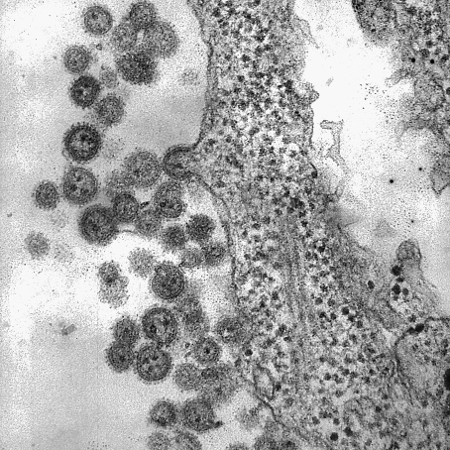Summary
Definition
History and exam
Key diagnostic factors
- presence of risk factors
- fever ≥37.5°C
- bleeding (gums, epistaxis, gastrointestinal, metrorrhagia)
- petechiae
- conjunctivitis
Other diagnostic factors
- malaise
- headache
- arthralgia
- myalgia
- abdominal pain
- nausea/vomiting
- diarrhoea
- lymphadenopathy
- neurological symptoms (e.g., confusion, ataxia, seizures)
- sore throat
- cough
- prostration/coma
Risk factors
- occupational exposure
- exposure to relevant rodent species
- adult males
- contact with infected person
- dwelling in endemic area
Diagnostic investigations
1st investigations to order
- reverse transcription-polymerase chain reaction (RT-PCR)
- enzyme-linked immunosorbent assay (ELISA)
- FBC
Investigations to consider
- malaria screen
- blood culture
- electrolytes and renal function
- liver function
- coagulation screen
- lactate dehydrogenase
- creatine phosphokinase
- CXR
- arterial blood gas
Treatment algorithm
symptomatic patients
Contributors
Authors
Tim Brooks, CBE MA MB BChir MSc FRCPath
Clinical Services Director
Rare & Imported Pathogens Laboratory
UK Health Security Agency
UK
Disclosures
TB leads the UK Health Security Agency (UKHSA) diagnostic service for imported fevers and haemorrhagic fevers.
Acknowledgements
Dr Tim Brooks would like to gratefully acknowledge Dr Nathalie MacDermott and Dr Thomas G. Ksiazek, previous contributors to this topic.
Disclosures
NMD declares that she has no competing interests. TGK has grants and contracts from NIH but is not involved in drug or vaccine research relating to South American haemorrhagic fevers. He has patents in regard to Ebola, Rift Valley fever, and hantaviruses. TGK is an author of a reference cited in this topic.
Peer reviewers
Stalin Vilcarromero, MD
Research Physician
US Naval Medical Research Unit 6 (NAMRU-6)
Iquitos
Peru
Disclosures
SV declares that he has no competing interests.
Vanessa Raabe, MD, MSc
Adult and Pediatric Infectious Disease Fellow
Emory University
Atlanta
GA
Disclosures
VR declares that she has no competing interests.
References
Key articles
Gómez RM, Jaquenod de Giusti C, Sanchez Vallduvi MM, et al. Junín virus. A XXI century update. Microbes Infect. 2011;13:303-311. Abstract
Enria DA, Briggiler AM, Sánchez Z. Treatment of Argentine hemorrhagic fever. Antiviral Res. 2008;78:132-9.Full text Abstract
Centers for Disease Control and Prevention. National notifiable diseases surveillance system (NNDSS). Viral hemorrhagic fever (VHF) 2025 case definition. 2024 [internet publication].Full text
Reference articles
A full list of sources referenced in this topic is available to users with access to all of BMJ Best Practice.

Differentials
- Malaria infection
- Dengue fever
- Yellow fever
More DifferentialsGuidelines
- High consequence infectious diseases (HCID)
- Viral haemorrhagic fever: ACDP algorithm and guidance on management of patients
More GuidelinesLog in or subscribe to access all of BMJ Best Practice
Use of this content is subject to our disclaimer